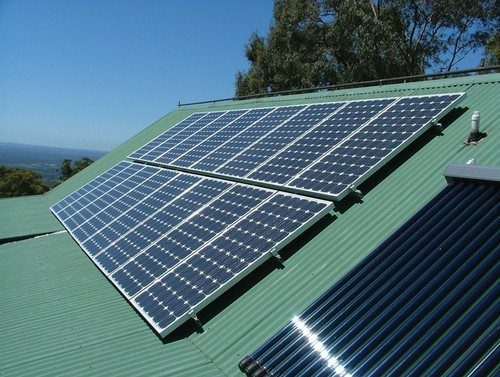It seems that the greatest barrier to the rapid deployment of solar in Australia will not be about cost or a lack of demand – it will be the ability to get connected.
That has been the common theme from a range of reports from different sources in recent weeks – from the Victorian Competition and Efficiency Commission’s inquiry into feed-in tariff’s in Victoria, the Australian Energy Market Operator’s landmark report on solar this week, the accompanying analysis from Sunwiz and Solar Business Services, and the Australian PV Association’s annual report for 2012, which will be released later today.
The APVA report says most parts of Australia have reached grid parity, which might better be described as “socket parity,” meaning that solar panels now offer a cheaper alternative than power from the grid – a reality that will become increasingly obvious to the public as more solar leasing products and programs are rolled out to consumers.
The APVA notes that in 2011, a total of 837 MW of solar PV was installed in Australia, more than twice the capacity of 2010, taking the total installed capacity in Australia to 1.4 GW. The report noted that 36 per cent of the new electricity capacity installed in Australia in 2011 was rooftop PV – even if it still only accounted for 3 per cent of total electricity capacity and 1 per cent of actual generation.
This is set to grow dramatically in coming years, because – despite the winding back of government tariffs and other incentives – the declining costs of PV and rising electricity prices meant that most residential PV customers and many commercial ones will be at parity.
The biggest issue, it says, is on long-term regulation, particularly the “right to connect,” and on appropriate tariffs being fed back to the grid. It wants restrictions to be placed on anti-competitive actions of electricity retailers and gentailers and more emphasis and support for energy storage to enable higher PV penetrations, as well as encouragement for customers on the on fringe of grids (who faced costly network upgrades) to convert to off-grid systems. (One interesting statistic was the increase in domestic off-grid installations, which more than doubled to 101MW in 2011).
This actions of retailers and gentailers, as well as distribution networks, was an issue also identified by VCEC, which noted that utilities were often reluctant to provide connections – but did not offer a solution – while the AEMO said there may be physical constraints to the network.
AEMO also noted the various barriers in its groundbreaking report on solar earlier this week – the first time the energy regulator had formally recognised the potential size of the solar PV market, and its disruptive nature to the broader grid and energy businesses.
The AEMO report canvassed various scenarios for the rollout of PV, suggesting a high scenario of 18GW of installed PV on the National Electricity Market (so excluding WA, NT and other off grid areas) by 2031 – nearly 10 times the forecast of Treasury and other government advisory bodies.
Sunwiz, whose forecasts helped shape the AEMO report, have issued a separate paper suggesting an even more rapid deployment of PV, and predicting that if off-grid, utility-scale, and WA and NT solar installations are included, the installed capacity in Australia could reach 18GW by 2022 – or around 30 per cent of total capacity, and approaching 10 per cent of production.
In this scenario Sunwiz head Warwick Johnston notes that this will have a disruptive influence on generators and retailers – the merit order is changed, transported volumes decrease, and peak pricing events alter in their timing and frequency.
“Indeed, though deployment on this level may threaten current vested interests, PV can deliver outstanding benefits to the Australian community, environment, and economy,” Johnston writes in his report. “On the basis of PV’s inevitable financial favourability within a decade, it is likely that today’s owners of fossil fuel generators will be heavily invested in the deployment of solar power in the not too distant future.“
And, he notes, it means that home owners (and their capital) can take a more active role in climate mitigation. “Rather than relying entirely upon government or the top 500 Australian energy users to address climate change, most of the investment in solar electricity generation (and associated emissions reductions) entailed in the forecast would come from home and business owners, leveraging billions of private dollars to mitigate climate change and improve the financial sustainability of businesses.
“In the long run, the fewer barriers there are to solar power, the sooner solar power can distribute its benefits, to the betterment of current and future generations.”







